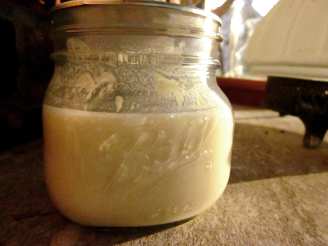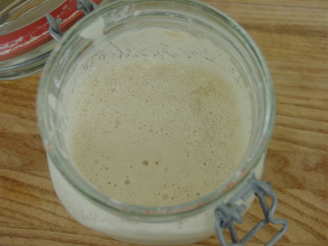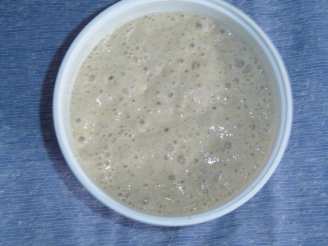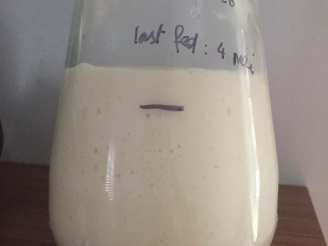Rye Sourdough Starter and Bread
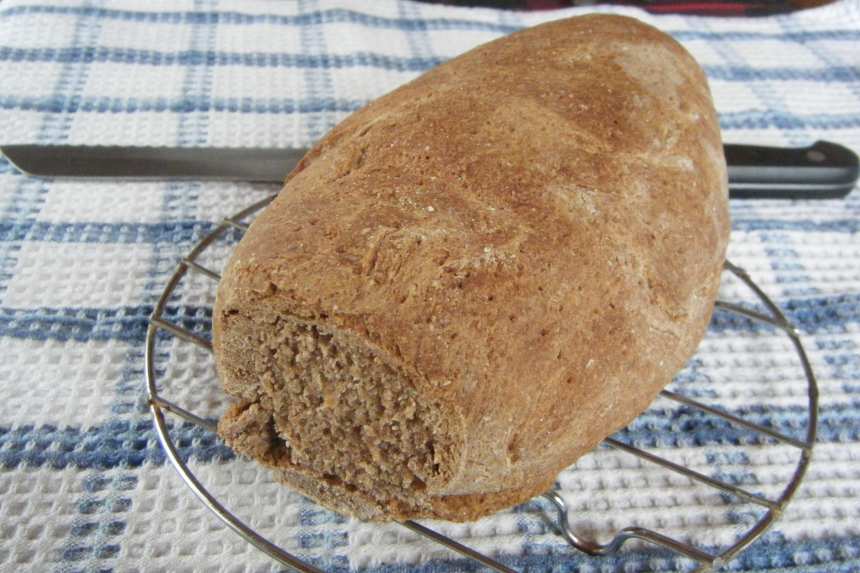
photo by feralgreens

- Ready In:
- 73hrs
- Ingredients:
- 9
- Yields:
-
1 loaf
- Serves:
- 1
ingredients
directions
-
Starter:
- Day 1: In a 1 quart jar with a lid mix 100 g rye flour with 100 ml lukewarm water. Stir well to completely mix. Don't mind if it seems not to be enough water and the dough is sticky. Just mix well to have a homogenous dough.
- Close the lid of the jar loosely and let stand for 24 hours at room temperature, maybe not in the coolest room of the house --.
- Day 2: Stir the starter well, close the lid again and let stand for another 24 hours.
- Day 3: Stir in 100 g finely ground whole rye flour and 100 ml lukewarm water, cover again and let stand for another 24 hours.
- Open the jar and check the smell: DON'T stick your nose into the jar! I did that with my first attempt and nearly burnt off my mucosa with the cloud of acetic acid that evaporated from the vinegar starter I produced -- So, open the jar and carefully check the smell. If it doesn't sting but smell pleasantly sour, proceed. The colour of the starter should be greyish brown.
-
Bread:
- Place the flour in a large bowl, make a well and fill the sourdough starter into the well. Hold back about 2 tablespoons of the starter, put it into a glass jar, tightly close the lid and keep the jar in the refridgerator. It will not rise while in the fridge nor produce gas, so don't be afraid of tightening the lid.
- Mix the starter with some of the flour, then add the salt and water and knead for about 15 minutes. The dough is very heavy, so most machines give in and collaps. I always kneaded by hand on a floured surface until the dough was smooth.
- Form a ball and dust with flour, cover and let rest for 2 hours.
- On a dusted surface, knead lightly, form an oval loaf, cover and let rest for another hour.
- Preheat oven to 250 degrees Celsius (220 fan assisted).
- Place bread on a baking tray layered with nonstick parchment paper, prick bread with a fork in a regular pattern all over and brush with water.
- Place an ovenproof bowl with hot water on the bottom of the oven, then slip the baking tray into the oven and bake for 15 minutes.
- After 15 minutes reduce heat to 200 degrees Celsius (180 fan assisted), continue baking for 30 minutes.
- Put off the oven after 30 minutes, but don't open yet. Let the bread rest.
- for another 15 minutes in the hot oven.
- Take it out and knock at the bottom of the bread. It should sound hollow.
- Let completely cool on a wire rack.
- You need not keep the bread in the fridge.
- If you use the starter for the first time, it works better if you add some yeast to the bread dough because the fresh starter is not very strong.
- The starter which you hold back will be strong enough without adding yeast if you feed it again for 3 days like described above.
Questions & Replies
Got a question?
Share it with the community!
Reviews
Have any thoughts about this recipe?
Share it with the community!

